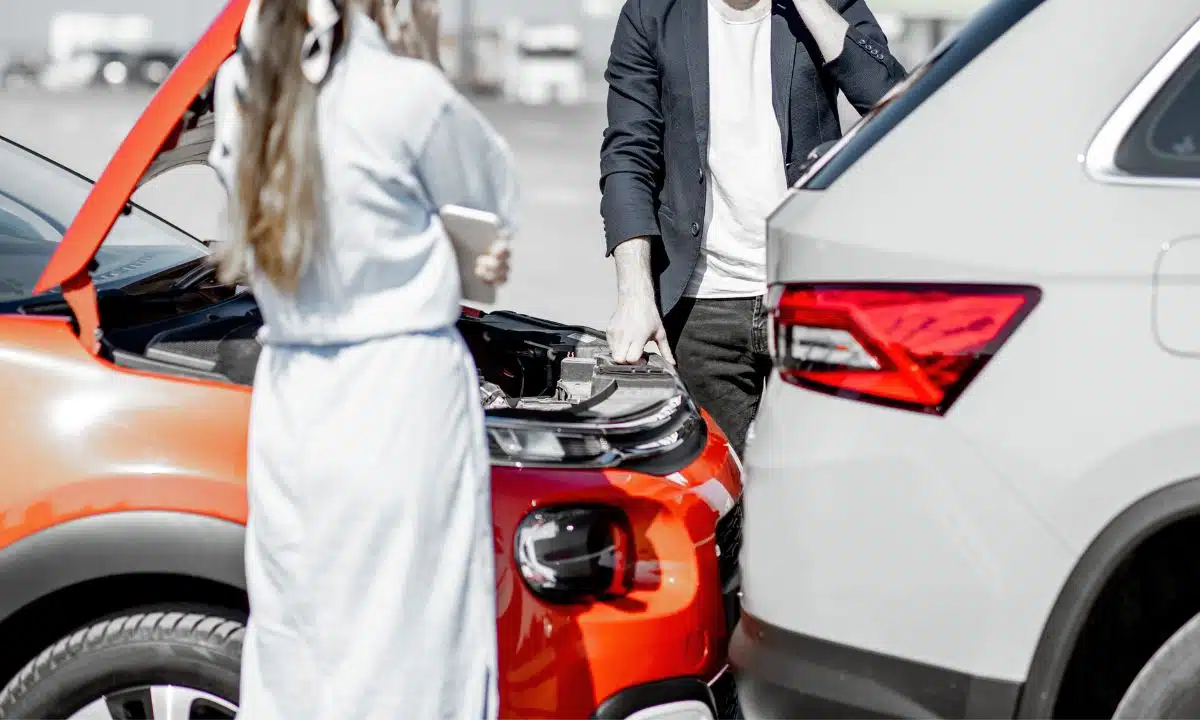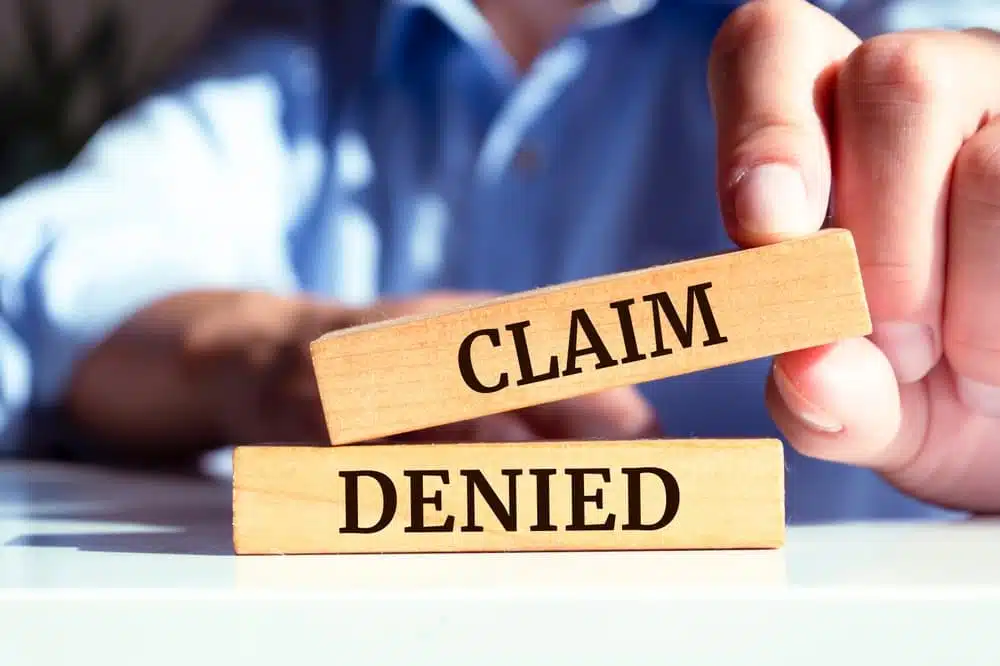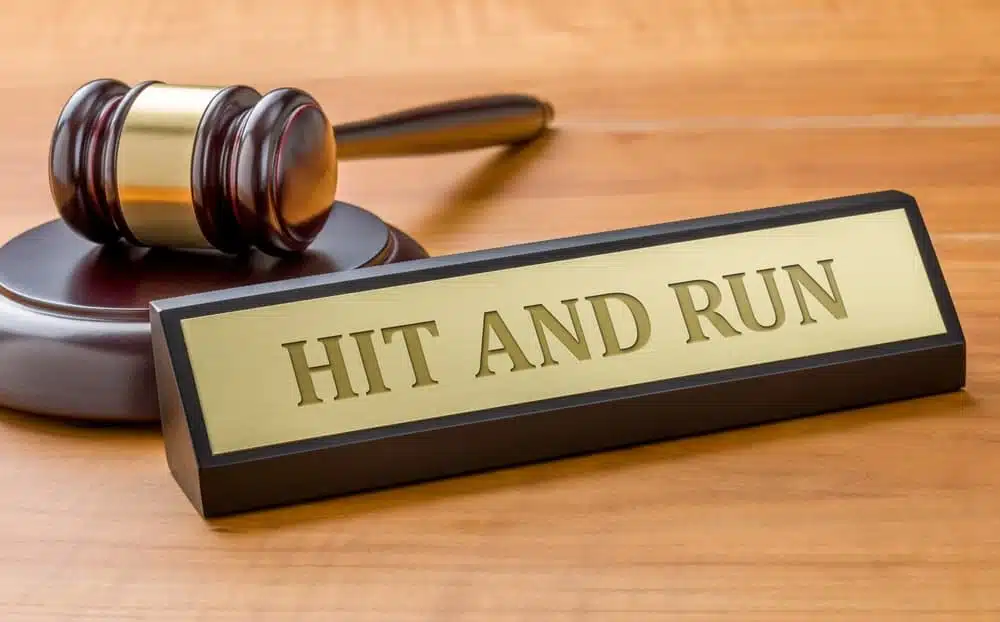
Many people think that figuring out fault for a rear-end car accident is simple, that the driver in back is always to blame. In many cases, that is true. But some collisions are more complicated, and the assumption that the trailing driver is always to blame doesn’t hold true in every situation.
Determining who is at fault in a rear-end accident is often more than a simple matter of who struck whom.
Details like sudden braking, faulty brake lights, or road hazards can all affect liability. State laws differ, and insurance companies often look for reasons to reduce or deny claims. Before you know it, a rear-end accident can become a complicated and firmly disputed matter.
Key Takeaways
- Rear-end collisions are often, but not always, the fault of the rear driver.
- Fault depends on the facts of each crash, including sudden stops or broken brake lights.
- In fault states, victims can pursue claims against the at-fault driver for all losses.
- No-fault states limit claims unless injuries meet a “serious injury” threshold.
- Comparative fault laws may reduce your compensation if you share blame.
- Evidence like police reports, photos, and medical records is crucial to proving your claim.
- Quick settlements from insurers are usually too low to cover your long-term needs.
- The Rothenberg Law Firm can investigate your case, fight for fair compensation, and protect your rights every step of the way.
Determining Fault in Rear-End Accidents
The phrase “rear-end collision” often leads people to assume the driver in the back is always at fault. In many cases, that’s true—but not always. Fault depends on the facts. And in personal injury claims, facts are everything.
Rear-end crashes typically happen because the rear driver:
- Follows too closely
- Speeds or drives aggressively
- Fails to brake in time
- Is distracted, fatigued, or impaired
- Drives in hazardous weather without caution
When a driver fails to keep a safe distance or pay attention, the law generally considers that negligent behavior. But there are important exceptions.
Sometimes, the front driver shares fault or is entirely at fault; for instance, if they:
- Slam on the brakes for no reason
- Reverse suddenly
- Have broken brake lights
- Pull out abruptly into traffic
These cases can become highly contested. Insurance companies often seize on any evidence that the front driver did something wrong to reduce payouts. That’s why looking for and gathering strong evidence after a rear-end crash is so important to any legal actions drivers take.
The Role of Evidence in Proving Fault
Establishing fault in a rear-end accident is rarely about one statement or one photo. It’s about building a persuasive case through facts supported by multiple pieces of evidence.
Evidence can include:
- Police reports noting fault determinations
- Witness statements
- Dashcam or traffic camera footage
- Vehicle damage photos
- Black box data from modern vehicles
- Medical records linking injuries to the crash
Working with a lawyer to gather and preserve evidence quickly helps keep the facts clear and protects your interests. Taking action right away can make a big difference in proving fault and strengthening your position after a rear-end accident.
Rear-End Collisions in Fault vs. No-Fault States
One of the biggest factors affecting a rear-end accident claim is where the crash occurred. Every state handles car accidents differently. Some follow a “fault” system, while others use a “no-fault” system.
What Happens in Fault States
In a fault state, the driver who causes the accident—and their insurance—pays for the injuries and losses of others. That means if you’re rear-ended in a fault state, you can pursue a claim directly against the at-fault driver’s insurance for:
- Medical bills
- Lost income
- Pain and suffering
- Property damage
But even in fault states, comparative negligence rules can affect how much money you receive. If you’re partly responsible for the crash, the compensation you recover could be reduced in proportion to your share of fault. This could apply to you, for instance, if another driver rear-ended you when your brake lights weren’t working.
How Rear-End Crashes Work in No-Fault States
No-fault states, such as New York, operate differently. In these states, your own insurance pays for your medical bills and certain other expenses, no matter who caused the crash. This coverage is known as Personal Injury Protection (PIP).
But here’s where people often get confused: PIP doesn’t cover everything. It usually does not pay for pain and suffering or full lost wages beyond certain limits. To step outside the no-fault system and sue the at-fault driver, your injuries must meet a “serious injury” threshold defined by state law.
Rear-end crashes often cause whiplash, concussions, or back injuries, some of which can qualify as serious under these laws. But insurers may dispute whether your injuries meet the threshold. Having an attorney can make the difference between recovering partial compensation under PIP or pursuing a larger claim against the negligent driver.
What is a Choice No-Fault State?
Some states use a system called choice no-fault, giving drivers the option to pick between no-fault coverage and a traditional at-fault policy. In states like New Jersey and Pennsylvania, you can decide if you want your own insurance to pay for your injuries regardless of fault or if you’d rather rely on an at-fault system, where the driver who caused the crash must cover damages.
Drivers who choose no-fault coverage might pay lower premiums but could face limits on suing for pain and suffering. This choice can significantly affect how rear-end accident claims are handled and what compensation you might recover.
Rear-End Collisions and Comparative Fault
Many people think being rear-ended means a guaranteed win. But in many states, comparative fault laws allow insurance companies to argue you were partly to blame.
Consider these examples:
- Your brake lights were out.
- You stopped suddenly for no clear reason.
- You changed lanes recklessly, then slowed down.
- You failed to move your disabled vehicle off the roadway.
Even small percentages of fault can reduce your settlement. In pure comparative fault states, such as New York, you can still recover damages regardless of your share of fault, but your recovery shrinks by your fault percentage.
In modified comparative fault states, such as New Jersey and Pennsylvania, the system works much the same unless you’re more than 50% at fault (or in some states, 51%), at which point you’re barred from seeking compensation.
Comparative negligence rules demonstrate why even seemingly simple rear-end crashes benefit from legal guidance. Insurance adjusters look for any reason to argue you share blame. Having a legal team investigate and fight for you protects your right to full compensation.
Common Injuries in Rear-End Accidents
Rear-end crashes may happen in an instant, but the injuries can linger for months—or even become permanent. Some of the most common injuries include:
- Whiplash: Soft tissue damage to the neck that can cause severe pain and reduced mobility.
- Concussions or traumatic brain injuries (TBIs): Even low-speed crashes can cause the brain to strike the inside of the skull.
- Back injuries: Herniated discs or spinal cord damage can develop gradually after the crash.
- Shoulder injuries: Seatbelts and forceful impacts can tear muscles or rotator cuffs.
- Facial injuries: Airbags deploying suddenly may cause cuts, bruises, or fractures.
- Psychological trauma: Anxiety, PTSD, and depression often follow traumatic collisions.
Many people assume they’re fine after a rear-end accident, only to experience worsening pain days or weeks later. Insurance companies may argue your injuries are unrelated to the crash if you wait to seek medical care. Always seek medical attention promptly and keep records of every doctor visit and symptom.
Steps to Take After a Rear-End Accident
If you’ve been involved in a rear-end accident, you may already be seeing doctors for your injuries. If you haven’t been evaluated yet, don’t wait. Even crashes that seem minor can cause injuries that grow worse over time, like whiplash or brain injuries that aren’t obvious right away. Getting medical care as soon as possible protects both your health and your legal rights. Insurance companies often use gaps in treatment to argue that your injuries weren’t caused by the accident.
Beyond medical care, there are other important steps to help protect your claim and strengthen your case for compensation:
Hire a lawyer
Rear-end accidents might look simple, but proving fault and negotiating with insurers can quickly get complicated. An attorney can handle the paperwork, gather evidence, and fight for the full compensation you deserve, so you can focus on recovering.
Keep all medical appointments and follow your treatment plan
Insurance companies look for missed appointments or gaps in care as a way to argue that your injuries aren’t serious. Following your doctor’s instructions and documenting every visit creates a consistent medical record that connects your injuries to the accident and shows that you’re taking your recovery seriously.
Document your experiences
Write or record a daily journal about your pain levels, physical limitations, emotional distress, and how the accident affects your everyday activities. Details fade over time, and this personal record can become powerful evidence if the insurance company disputes the severity of your injuries.
Keep photos of vehicle damage, injuries, and the crash scene. Hold onto repair estimates, receipts for out-of-pocket expenses, and any correspondence with insurance companies. These records help build a clear picture of your losses.
Be cautious in conversations with insurers
Insurance adjusters might sound helpful, but they often look for statements they can use to reduce your claim. Don’t give recorded statements or discuss fault without speaking to your lawyer first.
Insurance companies monitor online activity and can twist your posts—even innocent photos or status updates—to argue that your injuries aren’t as serious as you claim.
Taking these steps protects not only your health but also your legal rights. A proactive approach helps ensure you have the strongest possible claim after a rear-end accident.
How The Rothenberg Law Firm Can Help
If a negligent driver rear-ended and injured you, you deserve a legal team with decades of experience successfully handling car accident claims and lawsuits — a firm whose personal injury lawyers are driven by results and a genuine compassion for what you’re going through.
We know rear-end crashes don’t just damage vehicles. They disrupt lives. Medical bills, lost wages or income, and physical pain can create stress that’s hard to measure. We approach every case as if we were fighting for our own family member.
Here’s how we help:
- We investigate crashes thoroughly, securing evidence fast.
- We work with skilled medical professionals to document your injuries.
- We handle every conversation with insurance companies, protecting you from pressure tactics.
- We prepare cases for trial if necessary, and insurers know we won’t settle for less than your case deserves.
- We offer free consultations and charge no legal fees unless we recover compensation for you.
Don’t try to handle a rear-end accident claim alone. Let us carry the legal burdens so you can focus on healing.
Take the Next Step Toward Justice
If you were involved in a rear-end accident, you may be dealing with medical care, lost income, and questions about your legal options. Insurance companies often try to pay as little as possible or blame drivers unfairly. Obtaining full and fair compensation after a car accident often means working with a personal injury lawyer who will fight to maximize your compensation.
The Rothenberg Accident and Injury Lawyers handle rear-end accident cases in New York, New Jersey, Pennsylvania, and across the country. For more than 50 years, our team of experienced car accident lawyers has helped people secure financial recoveries for serious injuries. We know how to investigate accidents, gather evidence, and challenge insurance companies that block your path to fair compensation.
Call (866) 771-4988 or contact us online for a free consultation. We’ll answer your questions, review your case, and explain how we can help you move forward with confidence.




